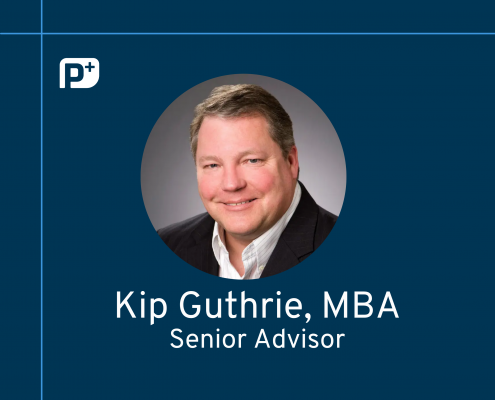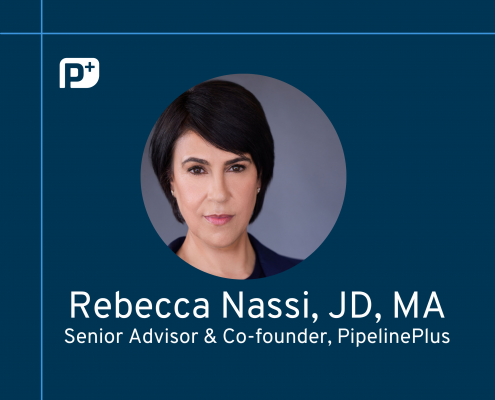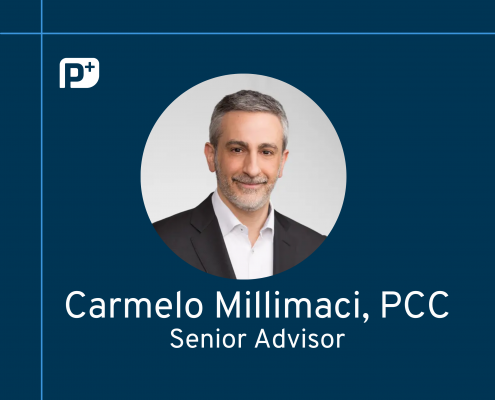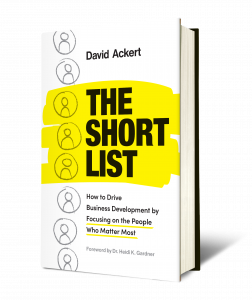Strategic Thinking for Business Development
When you envision how you would like your career to evolve over the next five-to-ten years, what comes to mind? Are you working with a handful of brand name organizations doing “bet the company” work or are you operating on a more local scale with a well-diversified high-volume base of clients? Are you consistently home with your family for dinners and weekends or are you racking up frequent flyer miles as you build an international book of business? Regardless of your ultimate outcome, the steps you take in the interim will be most successful when they are an extension of your authentic self and leverage your inherent strengths.
Most people do not take the time to reflect on this concept before spending time on business development. They do whatever their mentors have done, or follow whatever tips they’ve learned, and mostly garner only moderate success. But the most effective rainmakers recognize that because client service is such a time-consuming endeavor and business development hours are in such short supply, that they must put some forethought into their strategy if they ever hope to optimize their potential.
1. Leverage Points Worksheet
To help you discover where you will have an optimal return on your business development time and energy, we recommend the Leverage Points Worksheet, which you can access for free here. First, the worksheet will prompt you to reflect on the archetype that best suits your personality. The three archetypes that excel when it comes to client development are the Relationship Builder, the Expert Advisor, and the Service Maven. Knowing which of these archetypes best fits your personality is the first step in defining your long-term strategy. Are you a Relationship Builder who tends to be extroverted and enjoys social interactions, an Expert Advisor with a highly specialized area of expertise, or are you a Service Maven, providing exceptional client service at every turn? Even if you feel that you are a combination of all three, your primary archetype will be the one that resonates most.
2. Evaluate yourself according to the various activities that can connect you to prospects, referral sources and clients
The objective is to identify the forums that are most appealing to you personally, best-suited to your strengths, and where you are most likely to generate new business. Enter a rating in the second column that reflects your current ability to leverage that activity for new business. A rating of 1 means you feel that you are not generally successful in that forum. A rating of 5 indicates that you believe you do very well there. For instance, when you see “Group Setting”, you might think, “I’m not very comfortable in groups of people. I tend to avoid parties, and when I do go to them, I find a good reason to leave early. On a scale of 1-5, I’d give myself a Current Leverage Rating of 2.”
3. Provide a Potential Leverage Rating for the activity
If you gave yourself a Current Leverage Rating of 2 for Group Setting, but feel that, given some time, practice, and encouragement, you could potentially become more comfortable in that forum and work up to a rating of 4, enter it into the appropriate box. Then, continue on to the next activity until you’ve reached the bottom of the worksheet.
As you think about your business development strategy, focus on the activities with Potential Leverage Ratings of 4 and 5. You will ultimately find them to be more energizing, effective, and sustainable than those activities with a lower Potential Leverage Rating. In fact, you can stop putting energy into any of the activities with a low score, because they will require an unreasonable amount of effort on your part before they ever pay off.
Once you have completed the worksheet, your business development strategy will start to come into focus. If you’re a Relationship Builder looking for middle-market M&A work, and you prefer one-on-one networking, you may decide to focus on lunches with referral sources in the deal community. If you are more of an Expert Advisor and receive most of your referrals from lawyers and group settings, your strategy will likely include heavy involvement in the bar association or some other organization where you can talk about your expertise with fellow lawyers. For the Service Maven with a penchant for presentations, you should consider giving seminars to your key clients so you can expand your work with them.
Keep in mind that your strategy is not only a reflection of your long-term vision, your archetype, and your preferred activities. It is also a consideration of what you will not do. For instance, there may come a time when you will need to turn down work that isn’t a good fit with your expertise or is misaligned with your firm’s growth strategy. Certainly in the beginning of a career, it’s often better to say “yes” when an opportunity presents itself, but people who are more opportunistic than strategic can easily stray into a career rut, doing work they don’t enjoy for clients who pay too little and who demand too much. In the long run, you will find that turning down an unattractive opportunity is not only strategic, it earns the trust of the person who referred it to you, and helps to calibrate their understanding of the kind of work you do want. So, apply discernment to your strategic thinking.







